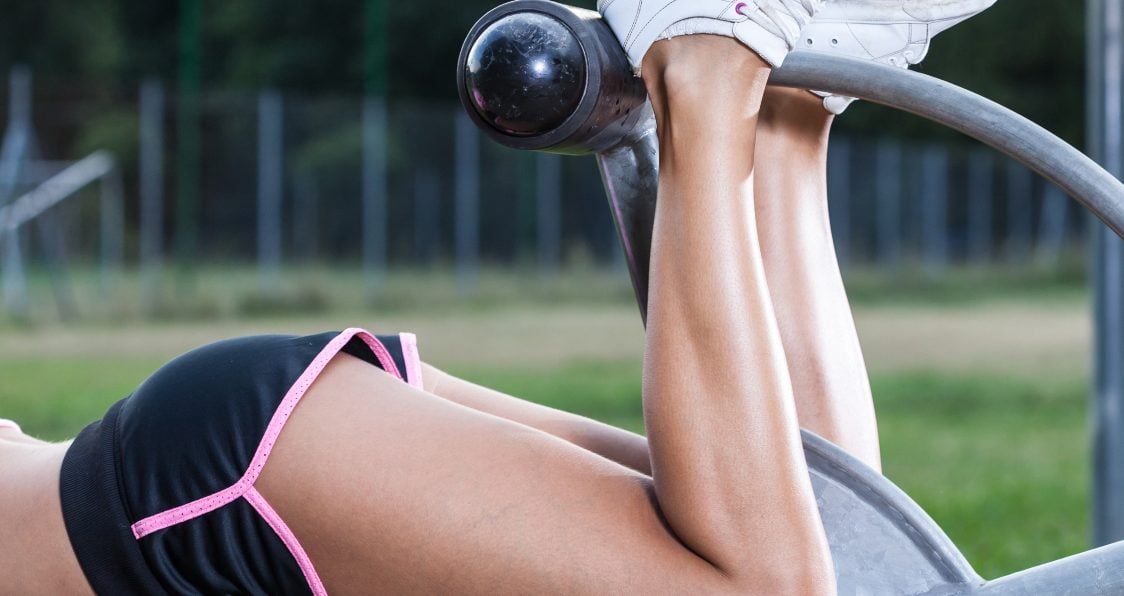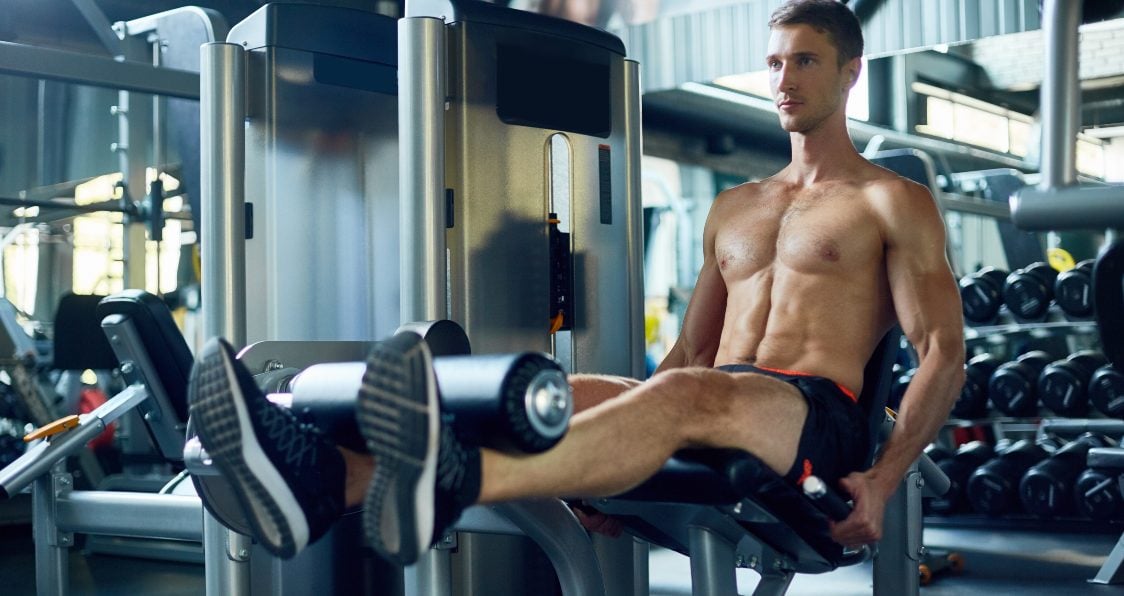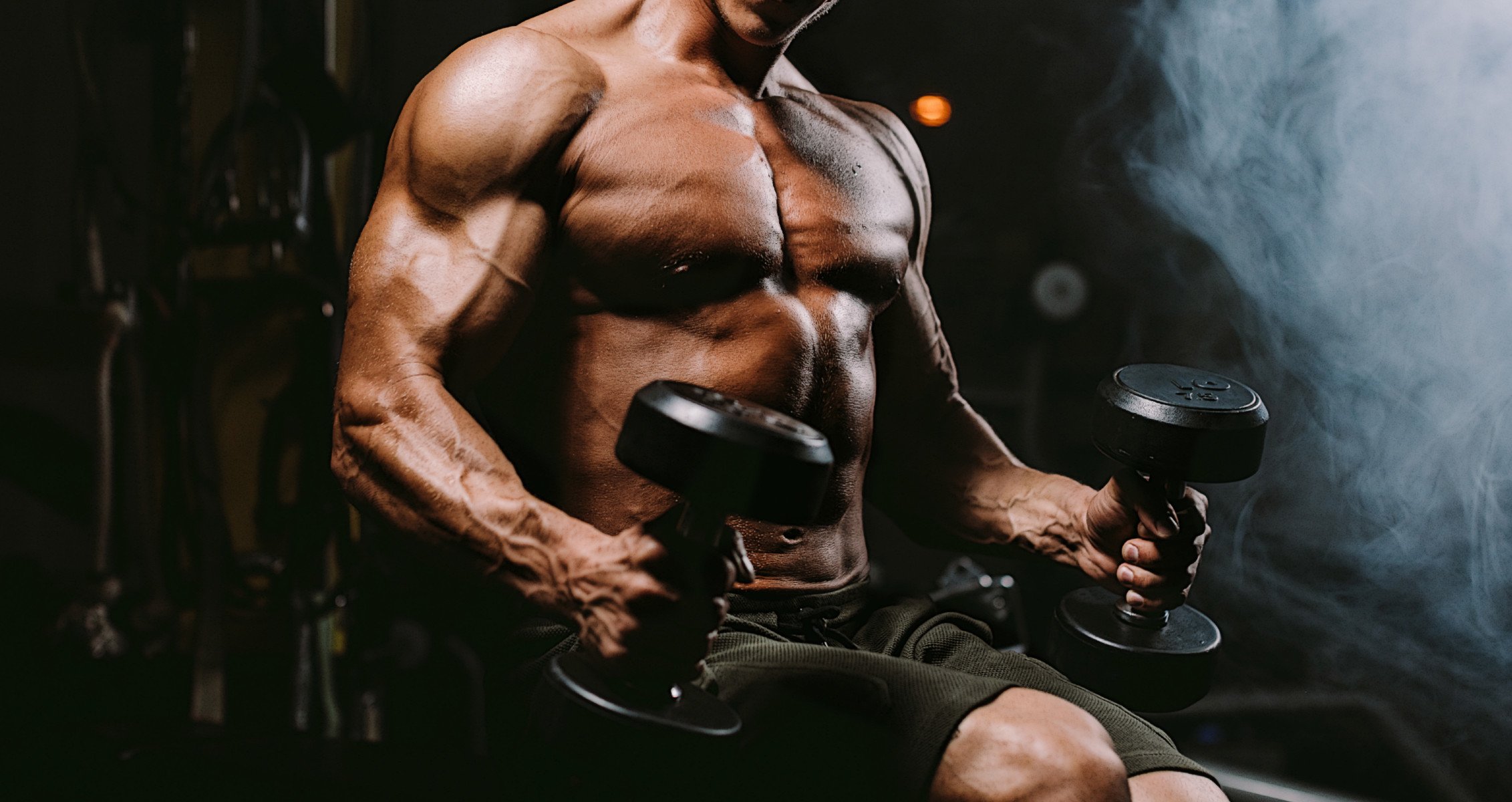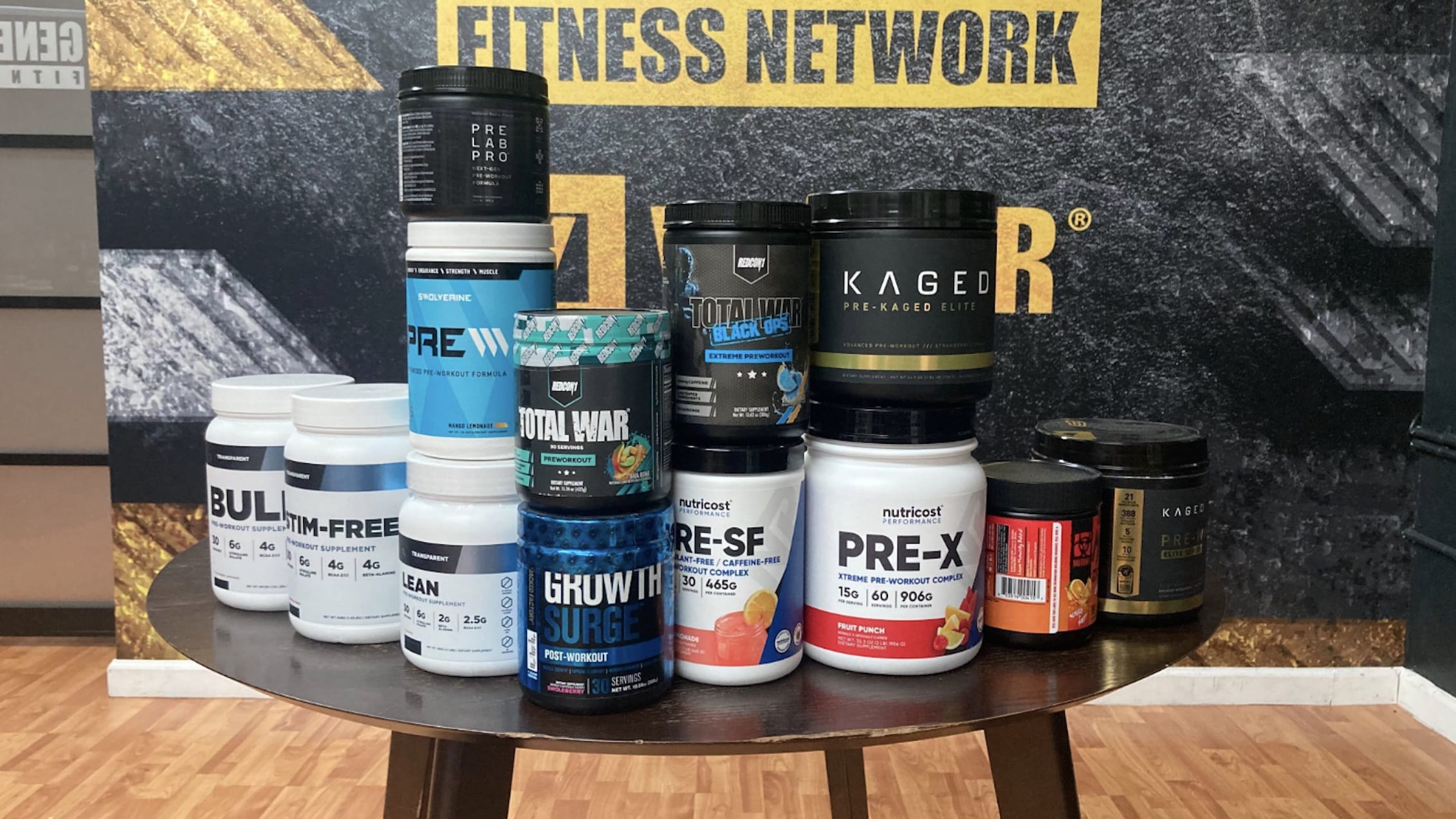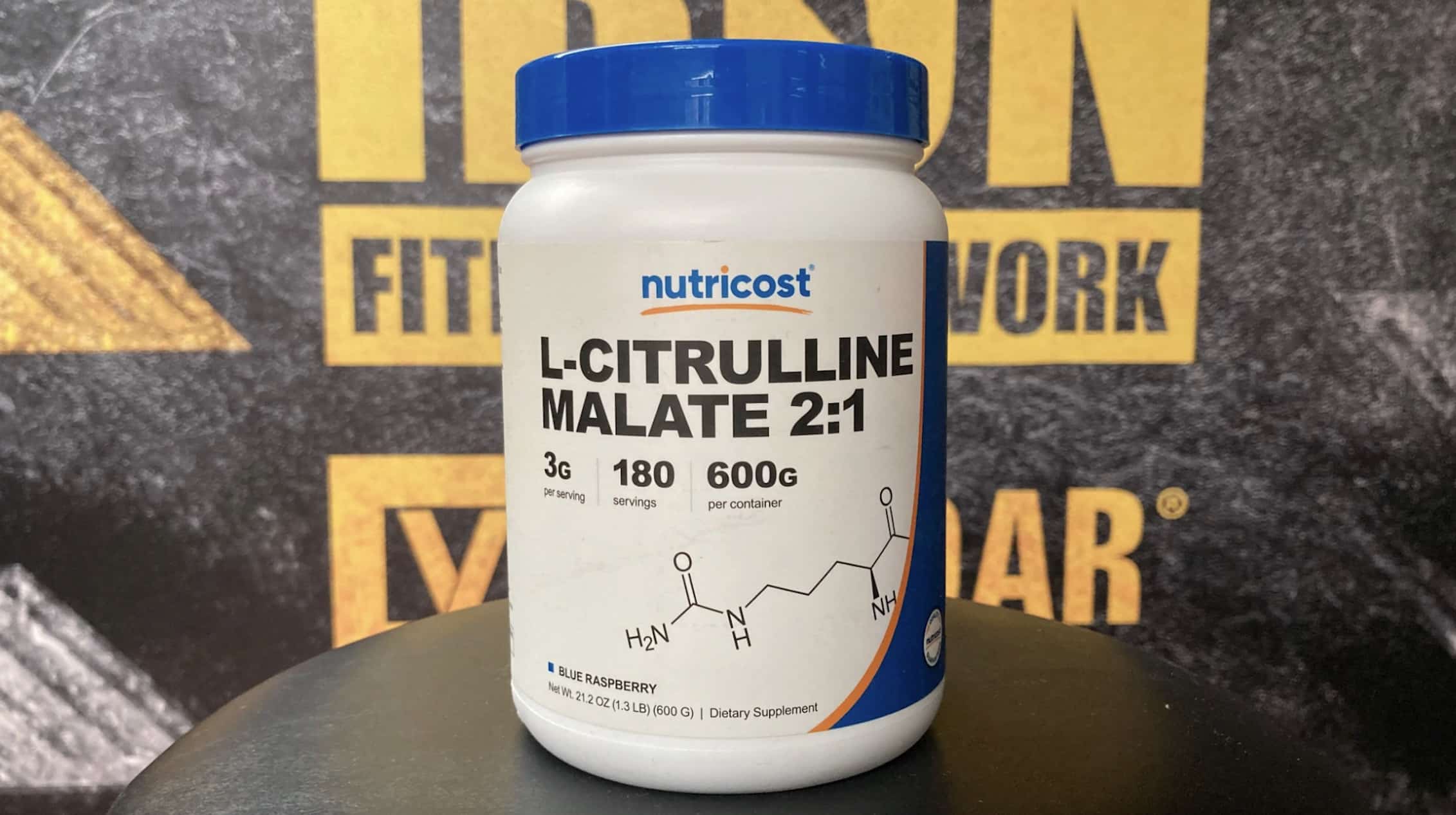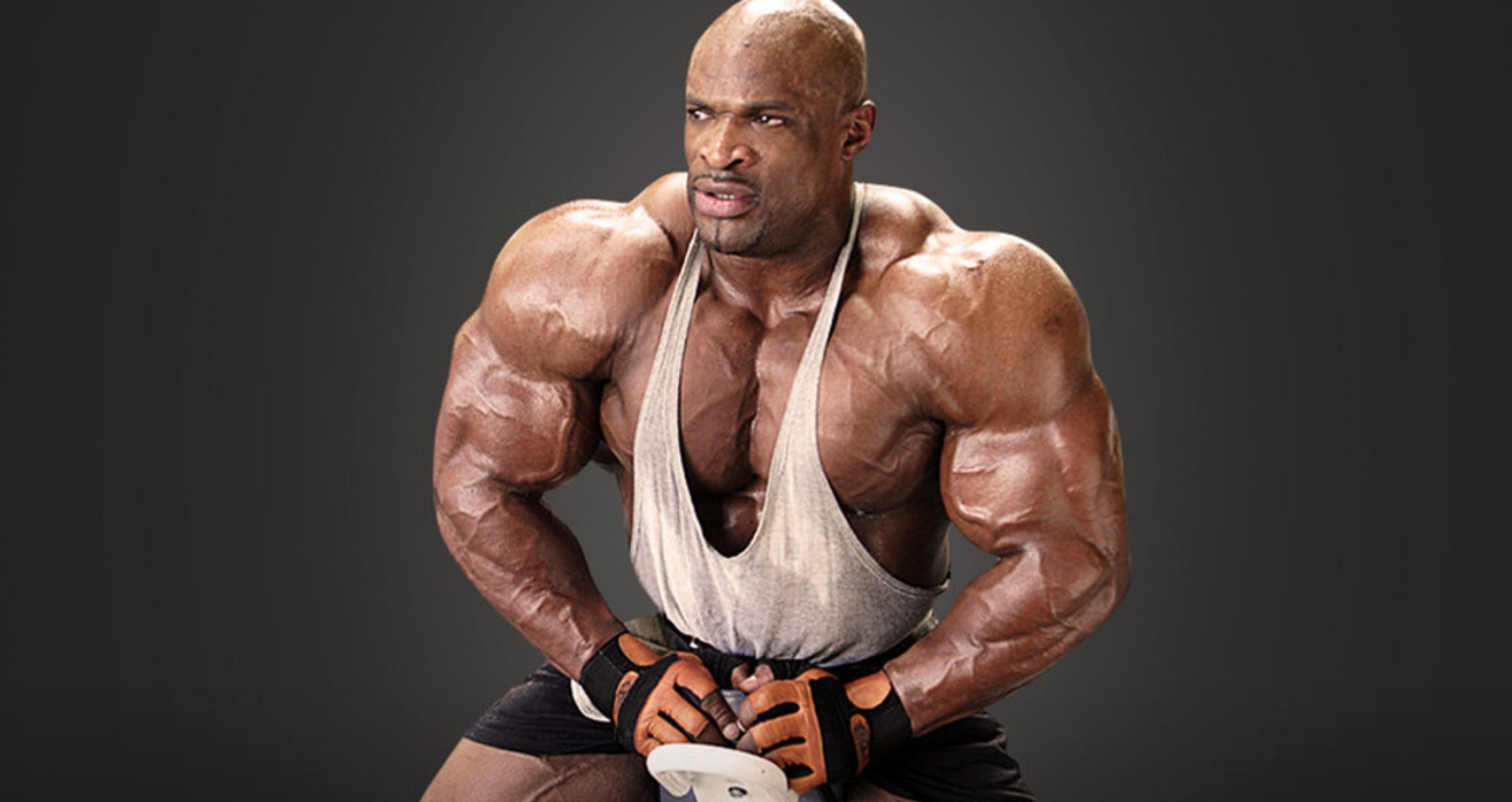Using the Pre-Exhaust Method to Unlock Leg Gains
If you are a keen gym goer, it is likely you are in one of two camps – either you love training legs or absolutely dread it.
It is imperative that we train all body parts equally – that means no skipping leg day! Completing tough leg sessions, regardless of whether you enjoy it or not, is a critical part of comprehensive strength training.
There is no denying that leg sessions are challenging enough already, however, there may be times where it is necessary to add even more intensity to your lower body sessions.
The two most common reasons for increasing the intensity of these sessions is to allow you to move beyond a training plateau or to keep your training fresh and interesting.
This article will provide detail on pre-exhaustion, it’s application and will also provide a pre-exhaust routine that can be used to improve quad strength & size.
Leg Day Exercise Selection
There are two types of exercises that make up the majority of strength training sessions – compound and isolation exercises.
A combination of compound and isolation exercise is best for comprehensive strength and size development (1).
A typical leg day session will focus on compound exercises initially; these are exercises that involve a great number of muscles and consequently allow you to lift heavy loads.
Some examples of effective lower body compound exercises include the squat, deadlift, lunge and leg press.
On completion of a number of compound exercises, the session then ends with a couple of isolation exercises which are single-joint movements that target specific muscle groups.
The leg extension, leg curl, and calf raise are all great examples of lower body isolation exercises.
To effectively apply the pre-exhaust strategy, simply reverse the order of compound and isolation so that you start with an isolation exercise first before completing compounds (2).
The purpose of this is to significantly fatigue a specific muscle group so that it becomes the weak link in the consequent compound lifts.
Evidently, building fatigue through an isolation exercise will make the following compound exercises significantly more challenging.
The pre-exhaust technique is great for targeting specific muscle groups. If you are aware that one muscle group is lagging behind or is weak, it may be an idea to utilize pre-exhaust.
Therefore, to target and develop the quads you will first perform leg extensions and then follow it up with a range of compound moves such as squats, lunges, and presses.
As a result, the quad will highly fatigue while the posterior chain (glutes, hamstrings & calves) remain relatively fresh.
The method ensures that the quads will be worked maximally to bring about optimal adaptations without placing too much stress on other muscles.
Pre-Exhaust Training Considerations
By switching the order of the exercises, you will find that you are noticeably stronger with the pre-exhaust isolation exercise.
Normally, the isolation exercises come last in the conventional leg sessions and therefore fatigue is a factor, but because you are completing the isolation first, the muscles are not fatigued.
Conversely, you will find that you are significantly weaker with the compound lifts – once again for the same reason. This certainly has it’s benefits and disadvantages.
The benefit of this method is that you will be able to expose the quads to a greater load and stress than they are used to which will force them to adapt quickly.
Although low reps and heavy weight are often prioritized in strength training, it is important to avoid low reps with the pre-exhaust method.
The reason for this is that with isolation exercises (specifically the leg extension and curl), lifting extremely heavy loads may put a large amount of stress through the knee joint (3).
As a result, if lifting heavy loads for low reps, the chances of experiencing a serious injury to the knee are increased.
Therefore, the recommendation for pre-exhaust exercise is to keep the weight light to moderate and aim for a higher rep range (8 reps or more).
The biggest drawback to pre-exhaust training is that the amount of weight that you can shift with your compound movements will reduce.
The weight that you normally use for squats, deadlifts, and presses is going to feel a lot heavier than normal due to the build-up of fatigue in the quads.
In addition, building fatigue and getting the pump early on in the session may mean that you also find proprioceptive abilities (such as balance & coordination) to be a lot more challenging.
Therefore, it may be beneficial to substitute free weight exercises for machine-based exercises as they do not demand a great degree of balance and coordination.
Once you have figured out what works best for you in terms of weight, reps, and equipment, you may find that the pre-exhaust technique actually reduces the amount of joint stress in the long run.
As a result, you may find that a range of exercises that were previously “off-limits” and now much more manageable.
A number of athletes and lifters who have lower body issues commonly use pre-exhaust routines so that they can use light loads yet still work to muscular failure.
Therefore, for those who are unable to use heavy loads for whatever reason, pre-exhaust is recommended as it will allow for effective training while using lighter and safer loads.
When to Apply Pre-Exhaust
As mentioned earlier, there may be a couple of reasons why you may wish to incorporate the pre-exhaust method into your workouts.
The main reason to use the pre-exhaust method is to stimulate new gains in strength and size.
If you are at an intermediate or advanced stage with your training, there may be times where progress slows. This is because the body is at the stage where it can comfortably deal with the demands of training.
Therefore, it is necessary to increase the amount of stress that the muscles experience in order for the adaptation process to begin once again.
Utilizing advanced training techniques (like the pre-exhaust) into your workouts is one straightforward method that can be used to increase the demand placed on the muscles (4).
If you are a strength training beginner, feel free to try out pre-exhaust however, be aware that it is not necessary to bring about change at your stage.
Focusing on the basics will yield the best results for novices and advanced training methods such as pre-exhaust are typically not required.
The second reason why you may want to utilize pre-exhaust is to bring some variation to your training program.
Performing the same exercises with the same number of sets and reps for months and months can become mundane and may negatively impact motivation levels as a result.
Declining motivation can have an impact on exercise adherence which will then impact how quickly you improve.
One of the best methods of maintaining motivation levels and adherence is to keep training interesting and enjoyable. Therefore, bringing in new training methods, exercises and set schemes can be useful.
Pre-Exhaust Quad Workout
You can add the following pre-exhaust quad workout into your training program or can adapt it to pre-exhaust the hamstrings or glutes instead.
The following workout starts with leg extensions to isolate and pre-exhaust the quads before moving into conventional compound strength training exercises.
The rep range is kept relatively moderate (with the majority of the sets between 6 – 12 reps) as lifting extremely heavy loads while in a fatigued state can be risky.
| Exercise | Sets x Reps |
| Leg Extensions | 3 x 8, 3 x 12 |
| Leg Press | 3 x 6-8 |
| Hack Squat | 3 x 6 |
| Smith Machine Squat | 3 x 10-12 |
| Romanian Deadlift | 4 x 10-12 |
| Standing Calf Raises | 2 x 12, 2 x 20 |
Workout Notes:
– Ensure you perform a full and comprehensive warm-up prior to beginning this routine. Perform a number of warm-up sets first and ensure you differentiate between warm-up sets and pre-exhaust sets.
– To pre-exhaust the hamstrings rather than the quads, simply switch out the leg extension and replace it with the leg curl.
– For the glutes, switch the leg extension out for either the cable pull-through or single leg glute kickback.
– To add more fatigue to the targeted muscle, add a couple more sets of the first exercise. In this case, look to complete as many as 6 sets of leg extensions before moving onto your compounds.
– Having completed the pre-exhaust sets, use a variety of compound exercises that will place a great demand on the body.
– Always be willing to go a little lighter than normal or to switch to a machine-based version of the exercise – fatigue will be a real factor that will influence how you perform.
– Select a weight that causes you to reach muscular failure by the time you have completed all the reps. Because your muscles are pre-fatigued, you will not lift the same amount of weight that you normally would.
Final Word
Providing that training is properly planned and executed, pre-exhaust is a great method that will heavily fatigue the target muscle and apply enough stress to bring about substantial changes in both strength and size.
References:
1-Gentil, Paulo; Soares, Saulo; Bottaro, Martim (2015-6). “Single vs. Multi-Joint Resistance Exercises: Effects on Muscle Strength and Hypertrophy”. Asian Journal of Sports Medicine. 6 (2). doi:10.5812/asjsm.24057. ISSN 2008-000X. PMC 4592763. PMID 26446291.
2-Soares, Enrico Gori; Brown, Lee E.; Gomes, Willy Andrade; Corrêa, Daniel Alves; Serpa, Érica Paes; da Silva, Josinaldo Jarbas; Junior, Guanis de Barros Vilela; Fioravanti, Gustavo zorzi; Aoki, Marcelo Saldanha; Lopes, Charles Ricardo; Marchetti, Paulo Henrique (February 23, 2016). “Comparison Between Pre-Exhaustion and Traditional Exercise Order on Muscle Activation and Performance in Trained Men”. Journal of Sports Science & Medicine. 15 (1): 111–117. ISSN 1303-2968. PMC 4763829. PMID 26957933.
3-Grood, E. S.; Suntay, W. J.; Noyes, F. R.; Butler, D. L. (1984-06). “Biomechanics of the knee-extension exercise. Effect of cutting the anterior cruciate ligament”. The Journal of Bone and Joint Surgery. American Volume. 66 (5): 725–734. ISSN 0021-9355. PMID 6725319.
4-Wallace, William; Ugrinowitsch, Carlos; Stefan, Matt; Rauch, Jacob; Barakat, Christopher; Shields, Kevin; Barninger, Andrew; Barroso, Renato; De Souza, Eduardo O. (January 6, 2019). “Repeated Bouts of Advanced Strength Training Techniques: Effects on Volume Load, Metabolic Responses, and Muscle Activation in Trained Individuals”. Sports. 7 (1). doi:10.3390/sports7010014. ISSN 2075-4663. PMC 6359665. PMID 30621334.


